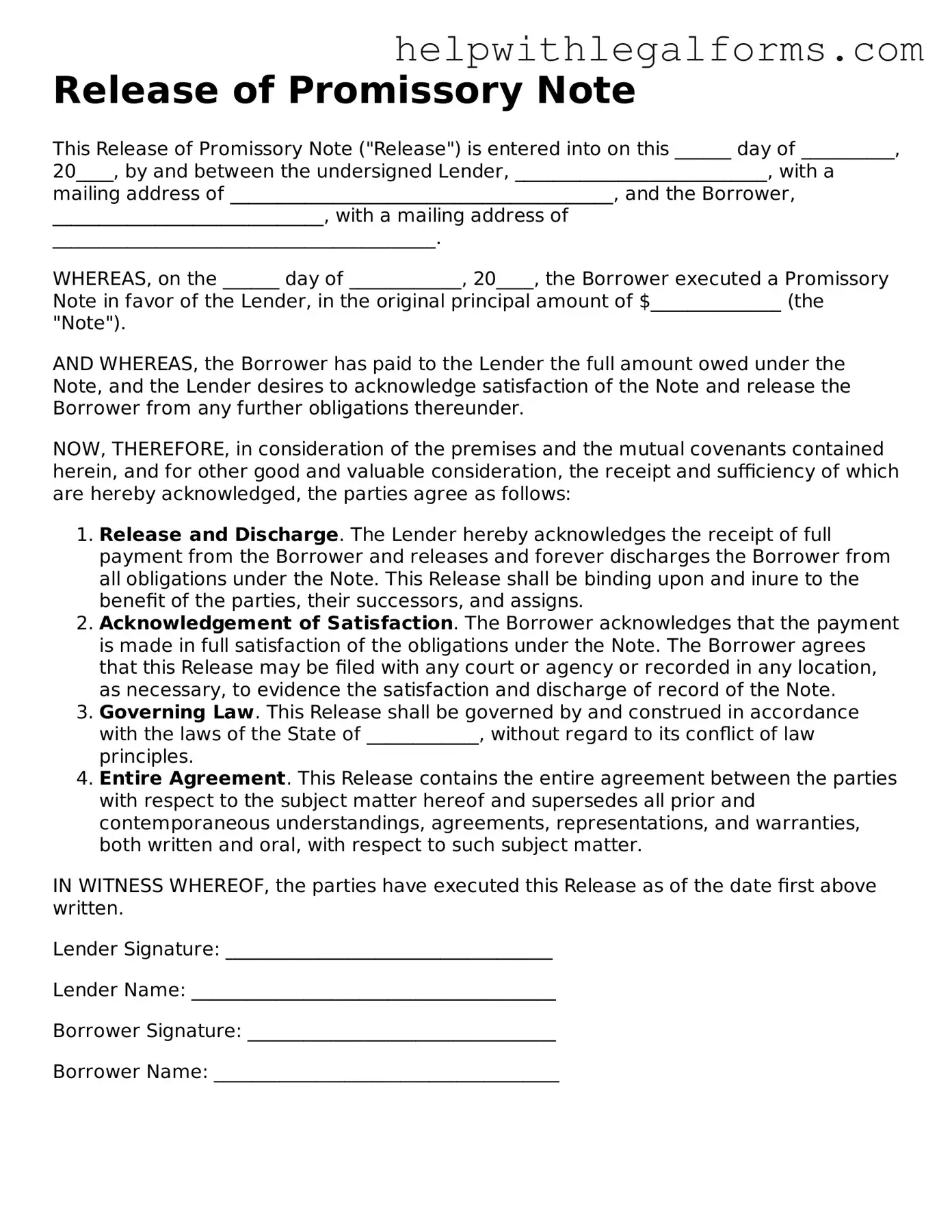Release of Promissory Note
This Release of Promissory Note ("Release") is entered into on this ______ day of __________, 20____, by and between the undersigned Lender, ___________________________, with a mailing address of _________________________________________, and the Borrower, _____________________________, with a mailing address of _________________________________________.
WHEREAS, on the ______ day of ____________, 20____, the Borrower executed a Promissory Note in favor of the Lender, in the original principal amount of $______________ (the "Note").
AND WHEREAS, the Borrower has paid to the Lender the full amount owed under the Note, and the Lender desires to acknowledge satisfaction of the Note and release the Borrower from any further obligations thereunder.
NOW, THEREFORE, in consideration of the premises and the mutual covenants contained herein, and for other good and valuable consideration, the receipt and sufficiency of which are hereby acknowledged, the parties agree as follows:
- Release and Discharge. The Lender hereby acknowledges the receipt of full payment from the Borrower and releases and forever discharges the Borrower from all obligations under the Note. This Release shall be binding upon and inure to the benefit of the parties, their successors, and assigns.
- Acknowledgement of Satisfaction. The Borrower acknowledges that the payment is made in full satisfaction of the obligations under the Note. The Borrower agrees that this Release may be filed with any court or agency or recorded in any location, as necessary, to evidence the satisfaction and discharge of record of the Note.
- Governing Law. This Release shall be governed by and construed in accordance with the laws of the State of ____________, without regard to its conflict of law principles.
- Entire Agreement. This Release contains the entire agreement between the parties with respect to the subject matter hereof and supersedes all prior and contemporaneous understandings, agreements, representations, and warranties, both written and oral, with respect to such subject matter.
IN WITNESS WHEREOF, the parties have executed this Release as of the date first above written.
Lender Signature: ___________________________________
Lender Name: _______________________________________
Borrower Signature: _________________________________
Borrower Name: _____________________________________
